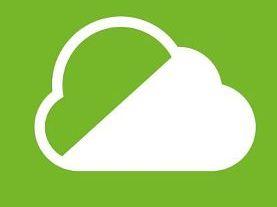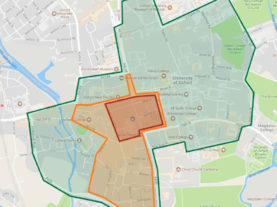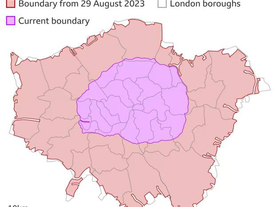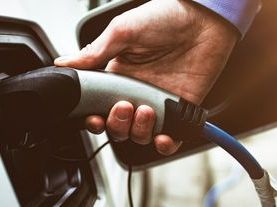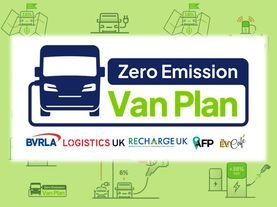In Budget 2021 the Chancellor announced 130% Super Deduction for main rate assets and 50% First Year Allowance for special rate assets for two years.
130% Super Deduction for main rate assets and 50% First Year Allowance for special rate assets for two years
This measure will allow companies to claim 130% in-year relief for main rate capital expenditure on plant and machinery and 50% in-year relief for special rate capital expenditure, excluding operating leases, second-hand assets and cars from 1 April 2021 to 31 March 2023. Detailed guidance is given here: link and HM Treasury has produced a factsheet here.
BVRLA view: The association asked for a supercharged “Green Investment Allowance” in our representation for Budget 2021. We were glad to see HM Treasury using this mechanism for all plant and machinery. While this does not apply to cars or leasing, it does include chargepoints. We will continue to lobby for the extension of super deductions to leasing and rental.
Note: Please see link to the legislation clarifying the exclusion of leasing and rental: In section 46(2) of the CAA (https://www.legislation.gov.uk/ukpga/2001/2/section/46) General Exclusion 6 applies to leasing and rental.
The BVRLA has received the following clarity from HMRC on some outstanding questions around how the super deduction will work in practice.
How does the 130% impact Plant & Machinery currently with a 100% FYA?
A company must purchase a qualifying asset, that is it is plant or machinery, which is owned by the company as a result of incurring the qualifying expenditure. The plant or machinery is provided for the purposes of a qualifying activity and meets all of the eligibility requirements for either the new temporary 130% super-deduction or the 50% first-year allowance.
In that case the company may claim some or all of that expenditure under the new temporary reliefs. If the particular asset in question meets the qualifying conditions for a 100% first-year allowance, the company can choose which allowance to claim, they cannot claim both on the same amount of expenditure.
Whether that alternative claim is for the 130% super-deduction or the 50% first-year allowance is determined by how the asset would have been treated had it not qualified for a 100% first-year allowance, that is would it have been a main rate or special rate asset
Cars (including low CO2 cars) are specifically excluded from the scope of the super deduction and special rate allowance.
Does the 130% super deduction apply to vans and HGVs?
Vans, as long as they are not considered to be cars in accordance with the legislation at section 268A CAA 2001 and HMRC guidance at CA23500, and HGVs do not fall within general exclusion 2 section 46(2) CAA 2001. Where such assets are plant provided for the qualifying activity of the company then the expenditure incurred will qualify for the 130% super-deduction, on the basis that all other qualifying conditions for the new temporary relief are met.
Can super deductions be applied to Contract Purchase type agreements?
It is intended that assets purchased under a hire-purchase contract will be eligible for the new temporary super-deduction and special rate first-year allowance, provided that they meet the conditions for these reliefs. The new conditions for hire-purchase contracts are intended to provide greater clarity on the scope of Section 67 for the purposes of these allowances so that it is clearer when the treatment in Section 67 Capital Allowances Act 2001 applies and when it does not.
Assets purchased under a hire purchase contract will be eligible, provided they meet specific conditions, for the new temporary super-deduction and 50% special rate allowances. The draft legislation [clause 1 sub-clause 8] for the super-deduction supplants section 67(1)(b) CAA 2001 with Condition A and Condition B of section 1129(3) & (4) CTA 2010 which refer to ‘bailed’ and ‘property’ per below. This does not impact the operation of other parts of Section 67 which must also be considered. Condition C of section 1129(5)-(6) CTA 2010 has not been imported into Section 67 for the purposes of the super-deduction.
- The date on which the qualifying expenditure is to be treated as being incurred must be on or after 1 April 2021 and before 1 April 2023 and the other conditions for the super-deduction must be met.
- The qualifying expenditure yet to be incurred (future payments under the hire-purchase contract) is treated as being incurred on the date the asset is brought into use in the qualifying activity.
- Under the hire-purchase contract, the relevant plant or machinery must be delivered to the company without transfer of ownership (‘bailed’ or in Scotland ‘hired’) in return for periodical payments by that company.
- It also requires that ownership of that plant and machinery (‘property’) will pass to that company if the terms of the agreement are complied with and one or more of the following occurs—
- exercise of an option to purchase by that company,
- another specified act by any party to the agreement,
- the happening of another specified event
A lease contract with an option for the lessee to acquire the asset falls within section 67 CAA 2001 if the option to acquire the asset is below the expected market value of the asset at the date the option is exercised. Many contract purchase agreements have a guaranteed future value which is at or greater than expected market value. If that guaranteed future value also represents the balloon payment due from the lessee at the end of the contract, the contract will not be a Hire Purchase contract for the purposes of section 67 CAA 2001.
Could this apply to assets that are bought and then enter into sale and leaseback agreements?
A sale and leaseback arrangement is caught by the anti-avoidance provisions at sections 216 and 217 CAA 2001 in respect of the person to whom the asset is transferred [sold] and under section 229A CAA 2001 in respect of the company to whom the asset is hired back. No first-year allowance is to be made in respect of the company’s expenditure under the transaction – see HMRC guidance at CA28700.
Can this apply to grid upgrade costs?
Question: For expenditure on chargepoints, would a Distribution Network Operator’s grid upgrade (where they charge a firm to upgrade a substation and grid, either on the firm's property or elsewhere and the DNO retains ownership of the asset) now possibly be included in this? Alternatively, will a DNO be able to use this on the upgrade and pass it on savings to the business paying for the upgrade? As I understand from the 100% FYA what was in scope was according to HMRC CA Manual 23156 was expenditure on the below, which excluded anything to do with the DNO:-
1. The charging point itself;
2. Alteration of land for the purpose only of installing the FYA qualifying plant or machinery;
3. Plant or machinery installed for the sole purpose of providing the charging point with the necessary supply of electricity.
Answer: As a general comment, where the electric vehicle charge point is plant or machinery in an activity carried on by a company, then there should be no reason why expenditure incurred on the provision of the electric vehicle charging point qualifies for the new temporary reliefs. Provided the electric vehicle charging infrastructure is plant or machinery, critical consideration will then need to be given as to whether the expenditure is main rate or special rate expenditure. Only main rate expenditure can qualify for the 130% super-deduction whilst special rate expenditure can qualify for the new 50% special rate first-year allowance. Generally speaking, integral features of buildings and structures and long-life assets are special rate (amongst others). Electrical systems are included in the definition of integral features, so this will need to be considered on the particular facts of the case as to whether the electric vehicle charging infrastructure is an integral feature of a structure or building.
The general rule for capital allowances is found at section 11(4) CAA01:
“The general rule is that expenditure is qualifying expenditure if—
(a) it is capital expenditure on the provision of plant or machinery wholly or partly for the purposes of the qualifying activity carried on by the person incurring the expenditure, and
(b) the person incurring the expenditure owns the plant or machinery as a result of incurring it.”
Where a business has paid for an upgraded sub-station and grid but the DNO retains ownership, then the business is unable to meet the general conditions since it falls foul of the ownership rules at 11(4)(b). Consideration will need to be given as to whether a contribution allowance is available in accordance with Part 11 CAA01. A person who has made a capital contribution towards expenditure on the provision of an asset can claim capital allowances on the contribution if:
- the recipient would have been treated as incurring the expenditure,
- the recipient would have been able to claim PMA or MEA or the recipient is a public body, and
- the contributor and the recipient are not connected
The above conditions would appear to be met in the circumstances you have outlined.
Section 538 CAA01 contains conditions for contribution allowances where the expenditure is on plant and machinery (in addition to the general conditions). Sub-section 538(1)(b) and 538(2) combine to tell us that where a person makes a contribution to the cost of plant and machinery for the purpose of their own trade or relevant activity, then they are to be treated as if:
- The contribution were expenditure incurred for their own trade or relevant activity;
- They are the owner of the asset (for as long as the recipient owns it); and
- The asset were in use for the purposes of their trade.
In most cases I would expect the sub-station and grid, as owned by the DNO, not to be an integral feature of a building or structure; the facts of each case will need to be given careful consideration. For the DNO the sub-station building is not plant or machinery, but it will house items of plant and machinery. Expenditure on the provision of the plant or machinery will be qualifying expenditure for capital allowance purposes for the DNO. Where the DNO receives a contribution towards the expenditure incurred on the plant or machinery the contribution is deducted from the expenditure and capital allowances are due on the net amount in accordance with section 532 CAA01. Where this equipment is plant or machinery used in its qualifying business activities then, all other conditions being met, may qualify for these new temporary reliefs.
Your understanding of the 100% FYA rules for electric vehicle charging points and what is in scope appears sound.
Guidance on contributions can be found at CA14000

